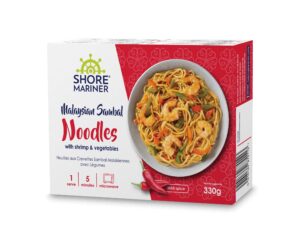Frozen Seafood – Taste, Health and Convenience
From a perfectly poached lobster in a seafood paella to simply frozen fish fillets, more and more families are turning to frozen seafood options that marry taste, health, and convenience.
When selecting frozen seafood, look for a seal that indicates quality and a label that provides information about the seafood’s source, processing and handling. Avoid open, torn or crushed packages.
Freshness
 When seafood is frozen immediately at its peak of freshness, it preserves the flavour and texture for a more extended period. Many consumers believe that fresh is always better, but the truth is that frozen seafood can be more delicious and healthy.
When seafood is frozen immediately at its peak of freshness, it preserves the flavour and texture for a more extended period. Many consumers believe that fresh is always better, but the truth is that frozen seafood can be more delicious and healthy.
Frozen seafood is also less expensive for the consumer. Purchasing frozen seafood cuts out the high transport, refrigeration and storage costs that come with buying fresh fish. This is because the freezing process locks in the freshness and reduces waste throughout the supply chain.
In addition, frozen seafood is less vulnerable to price fluctuations due to seasonal shortages. For example, if a type of fish is in short supply, the price will rise as buyers fight for it. By contrast, frozen seafood is available year-round and tends to be cheaper.
Another advantage of frozen seafood is that it can be easily stored and used when needed. Many consumers have busy lifestyles, and it is not always possible to purchase and cook fresh fish the day they are bought. Frozen seafood can be the perfect solution. It is easy to store in the freezer and can be thawed at the last minute before cooking.
The quality of frozen seafood can be just as good as the fresh alternative, but it is essential to buy the best. Buying frozen seafood from a trusted source ensures the product has been adequately frozen and maintained.
It is also advisable to select seafood that has been packaged well. Some packaging may contain a time and temperature indicator, which is a great way to check the quality of the product before purchasing. Look for a clear indication of the date that the seafood was frozen, and avoid seafood with a strong fishy smell or that is leaking juices.
If you choose to purchase fresh seafood, ensure that it is kept in the coldest part of your refrigerator and wrapped securely. Also, ensure it is not stored near raw meat products or vegetables, which can lead to contamination. Ideally, you should use shellfish within two days of purchasing, and if you cannot eat them immediately, store them on ice in a sealed container.
Convenience
Frozen seafood is an excellent option for busy households. It doesn’t need to be thawed and can be cooked straight from the freezer, which is a great time saver. In addition, frozen seafood is usually cheaper than fresh seafood. It also requires less energy to transport, which makes it an environmentally friendly choice. Moreover, frozen seafood is available all year round. As a result, many consumers prefer to buy it over fresh seafood.
In the past, fresh seafood was typically thawed in the store and then frozen at home before being sold to customers. Today, however, freezing can occur minutes after the fish is caught. This is often done to preserve the seafood’s taste, texture, and quality.
The popularity of frozen seafood is increasing due to rising income levels, population growth, urbanization, and growth in the food service industry. In addition, frozen seafood is convenient and can be stored for long periods. This convenience factor is driving the market’s growth. The global fixed seafood market is expected to reach $37,398.5 million by 2033.
Seafood freezes well; when correctly prepared and frozen, it tastes as good as fresh seafood. Many restaurants, sushi counters, and even grocery stores use frozen seafood because it provides a high-quality product at a more affordable price.
One of the main advantages of frozen seafood is that it doesn’t need any preservatives. This is important because preservatives can harm human health, especially in large quantities. In addition, frozen seafood doesn’t need refrigeration, which helps reduce environmental waste.
The frozen seafood market is expanding in Asia-Pacific because of the growing demand for seafood products. In particular, the need for seafood in India is increasing due to growing disposable income and a rising number of restaurants. In addition, the popularity of frozen seafood in the region is growing due to increased consumer awareness and improved supply chain. As a result, the fixed seafood market in the area is forecast to increase.
Health
Seafood is an integral part of a healthy diet. It provides protein, vitamins and minerals that help support average growth and development. It also contains essential fatty acids, which may reduce the risk of heart disease and lower cholesterol levels. Frozen seafood is an affordable and convenient way to eat more fish. It is just as nutritious as fresh seafood. Some frozen seafood is better because it has a longer shelf life. It is not exposed to bacterial and fungal contamination as quickly as fresh fish.